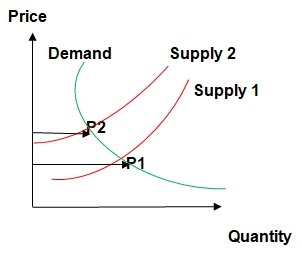The decision of the US government to impose an anti-dumping duty on Chinese importers of solar panels can have both positive and negative affects. First of all, this policy can strengthen the position of American manufacturing companies that cannot fight off the price competition of their Chinese counterparts. Such restrictions can save jobs of approximately 25 thousand American employees, who work in these manufacturing companies (Solar Energy Industry Association, 4).
These people are directly employed by the producers of solar equipment. One should also take into the indirect employment and the fact that such companies create job opportunities for the distributors, installers, and sellers of this equipment. Thus, the benefits of this can be quite palpable.
Yet, one should also consider some of the negative aspects. At the given moment, the market share of Chinese companies is approximately 50 percent. They fill half of the total demand for solar panels in the country. Provided that they will have to pay the tariff of more than 100 percent, they will have to abandon the US market. This will eventually result in decreased supply of such products and higher prices. On the whole, these changes can be illustrated with the help of this graphic.

In this graphic, the red curves indicate the changes in supply. P1 is the price of solar panels at the point when Chinese products are available to American customers. In turn, P2 is the price of these goods when their supply dramatically decreases. Hence, it is possible to say that customers will not benefit from the quotas imposed on foreign importers. These products can become less affordable to American buyers.
This is one of the reasons many environmental organizations argue that such policies will slow down the spread of solar energy technologies in the United States. Overall, one can argue that these tariffs can unbalance the equilibrium of demand and supply, and the impacts of this change will not be beneficial for every stakeholder.
Apart from that, one should also take into account the distributional consequences of this approach within the United States. In particular, we need to speak about those organizations which are engaged in the transportation of solar panels, sales, installation, maintenance, and so forth. The decreased supply of Chinese solar equipment will eventually diminish the demand for their services in the long term.
On the whole, solar equipment industry should not be limited only to manufacturing companies. Such interpretation fails to consider the way in which this market works. The alleged benefits of anti-dumping tariffs will not be equally distributed. These tariffs will have a positive effect on such producers as SolarWorld, yet, they will not bring any improvements to other representatives of this industry.
This is one of the reasons why 25 American companies opposed this decision by arguing that it could threaten more than 100,000 jobs within the United States (Palmer, unpaged). This argument must not be overlooked by policy-makers; it is quite probable that the benefits of these anti-dumping quotas will be outweighed by its drawbacks.
Therefore, prior to adopting new tariffs, Commerce Department should carefully estimate the effects of this policy on other companies working in this area of business. Probably, it might be necessary to work out a compromise with the Chinese government. This will be the most optimal decision under the circumstances.
Works Cited
Palmer, Doug. “U.S. trade commission to vote Friday on SolarWorld case”. Reuters. 2010. Web.
Solar Energy Industry Association.“US Solar Industry Year in Review 2009”. 2010. Web.